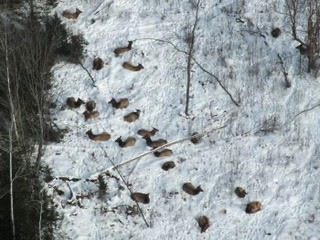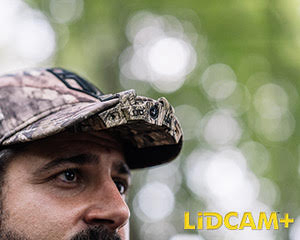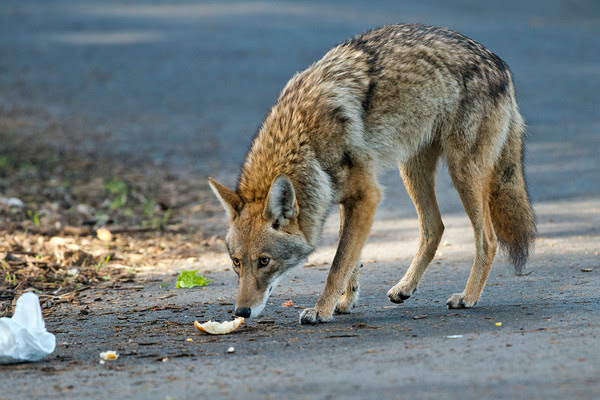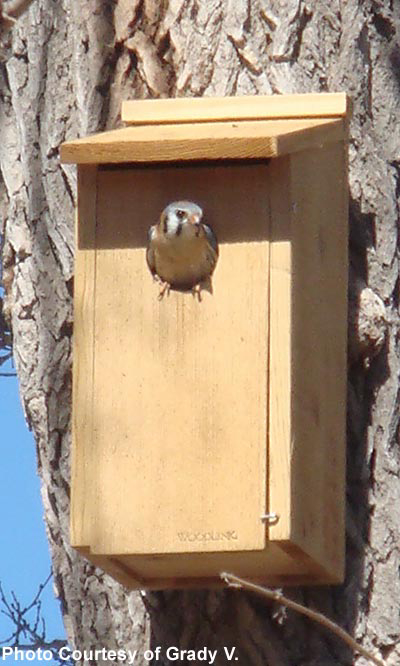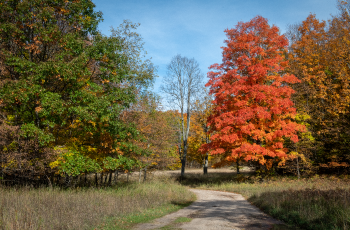A pair of Wood Ducks investigates a big nest box in advance of egg laying. Large natural nesting cavities are often in short supply, making every new big nest box installed before the nesting season an important asset.
Above, this Screech Owl & Kestrel House, occupied by an American Kestrel, is available at BestNest.
The largest of all nest boxes are made for Barn Owls. These nest boxes are becoming popular additions to farms, vineyards, and orchards where property owners welcome the natural rodent control the owls provide. This Barn Owl nest box is also available at BestNest.
Who wouldn’t enjoy hosting nesting screech owls? Or a Wood Duck hen and her brood, or even a pair of mini-falcons – American Kestrels. In parks and more rural settings some birders specialize in providing one or a number of big nest boxes for larger cavity nesting birds. Certain ducks, ranging from Wood Ducks to Hooded Mergansers and Buffleheads utilize big nest boxes, as well as a range of owls from screech owls and saw-whet owls to Barn Owls and Barred Owls. Kestrels are also popular cavity nesting birds that are exciting to attract with a big nest box.Give it a try by installing one big nest box – and see if you can limit your interest to just one.
Now’s the time to get big nest boxes installed to try to entice and benefit large cavity nesting birds. Keep in mind that there is a shortage of nesting cavities, with serious competition for existing cavity sites, so every new nest box can make a big difference this spring, and in future years. Nothing can be more rewarding for birders, and nothing can benefit cavity nesting birds more than ensuring there are plenty of nesting sites available each spring.
Everyone who already provides big nest boxes must be commended for their efforts! And to anyone who doesn’t have a big nest box in place, consider making this the year to change that. If you don’t have a property, or the right habitat, you may want to work with staff at a city park, nature center, wildlife refuge, or with a local property owner on a cooperative project.
Whether you build or buy a big nest box, it should have a hinged side panel or roof, to access the inside of the big nest box – to periodically monitor the nesting activities, and to clean and maintain the unit at the beginning and end of each nesting cycle. Installing a big nest box can be a bit much for one person to do, it require organizing a group of helpers – family or friends in your neighborhood; a school or university group, birding club members, or your birding buddies.
You can also ask for the help of a local public or private entity to help install a big nest box. Often, naturalists and property managers welcome such requests, and you never know how enthused the people you contact might become. They may be inspired by your initial interest, and if they enjoy the process, one nest box may lead to more in the future.
Location & Habitat
The location where you position a big nest box is every bit as important as providing a big nest box. The habitat available at a given location is especially important, as is the elevation of the nest box, along with other factors. First of all, what species are you trying to attract?
Wood Ducks and other cavity nesting ducks will require a suitable shallow wetland close by that has open water surrounded by emergent water plants. Screech owls and other small owl species prefer a woodland edge, and American Kestrels prosper where a grassland or pasture meets an open wooded area. The owls and kestrels primarily feed on mouse-sized rodents, and large insects like grasshoppers, crickets, and beetles; while in some areas small lizards are important too – so habitats that harbor such potential prey populations will benefit these big cavity nesters.
Predator-proofing
Other considerations are to provide the right size of nest box for the species you wish to attract. Both the size of the nest box and the size of the entrance are paramount. You don’t want the entrance to be so big that a potential predator can access eggs, nestlings, or even adults by reaching in, or even crawling inside, as in the case of squirrels, rats, or snakes.
Protecting any nest box from potential predators is paramount – otherwise you may just be providing a feeding station for mammalian or reptilian predators. A proper nest box installation is needed; preferably a nest box securely affixed to a pole with a predator guard on the pole to keep raccoons, squirrels, and snakes from accessing the precious nest box contents.
Patience – An important part of being a nest box landlord is to have a lot of patience, because birds may not occupy a nest box immediately. It may take a season or longer for birds to utilize your nest box, but be patient, keep up the good work, and appreciate that having an extra cavity site or 2 in your area is much better than not having enough.
Also, keep in mind that providing a nesting structure for a favorite species is fun, as well as fulfilling. Take pride in your efforts to help benefit large cavity nesting birds, enjoy the upcoming nesting season, and Good Luck!
Big Nest Box Info – To access the best information about all the potential birds that might use a big nest box in your area, along with the sizes of nest boxes and entrance holes for each species, habitat and installation information, and predator proofing info, you can consult the Cornell Lab of Ornithology’s Nest Watch, where you will find several webpages to serve you and inspire you. To access a wealth of excellent information about nest boxes – big and small – at NestWatch | Features of a Good Birdhouse – NestWatch
To learn more about How to Build Big Nest Boxes to attract the large cavity nesting birds you most wish to attract, see NestWatch | Features of a Good Birdhouse – NestWatch
To purchase a Wood Duck Nest Box, the best source to start with is BestNest at Duck Houses at BestNest.com! and keep in mind that many duck, owl, and kestrel nest boxes are interchangeable. Similarly, you can find a variety of Kestrel or Screech Owl Nest Boxes at Owl & Kestrel Houses at BestNest!
When you are ready to install a nest box, for information about the best location and habitat, preferred nest height, and more – get valuable information for each species at NestWatch | Nest Box Placement – NestWatch
Share your backyard birding experiences and photos at editorstbw2@gmail.com


